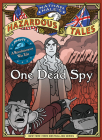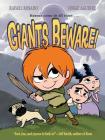A couple of nights ago, Eleanor came into my bedroom needing to talk about why she wanted to stop reading a book. On non-school nights, we let the kids stay up with reading lights, and Eleanor is always the last to turn hers off, reading until 10 or sometimes even 11 PM. Then she'll come downstairs to find me and Jeff, or into our room, with a smile on her face, that little smile that says I know I shouldn't be up, but now is my favorite time to talk with you, alone.

A couple of nights ago, she wasn't smiling. Earlier this week, she had begun to read Harry Potter and the Order of the Phoenix, the fifth Harry Potter book. I wrote this summer about Eleanor starting the series; how much I love what she is getting from the books, but how I have also been trying to slow her down, out of fear that the emotional content will take her too deeply over her head too young. I said I was fine with books 1-3, but discouraged book 4, in which Harry experiences the first death of a character we have grown to like, a fellow student murdered by Voldemort during the Tri-Wizard Tournament. My caution was rebuffed; she read on. After book 4, she reassured me the content was fine. She paused again, but late in the summer she began pushing to read book 5. She borrowed it from my parents last week.
Which brings us to Eleanor walking into my bedroom with The Order of the Phoenix under her arm, upset. A little more than 500 pages in, she had just read a scene set in a wizarding hospital, in which Harry, Ron, Hermione, and Ginny run into their friend Neville and his grandmother. Neville and Mrs. Longbottom are there to visit Neville's parents, who were tortured into insanity by one of Voldemort's followers.
It's not a dramatic or violent scene:
Neville's mother had come edging down the ward in her nightdress. She no longer had the plump, happy-looking face Harry had seen in Moody's old photograph of the original Order of the Phoenix. Her face was thin and worn now, her eyes seemed overlarge, and her hair, which had turned white, was wispy and dead-looking. She did not seem to want to speak, or perhaps she was not able to, but she made timid motions toward Neville, holding something in her outstretched had.
"Again?" said Mrs. Longbottom, sounding slightly weary. "Very well, Alice dear, very well -- Neville, take it, whatever it is...."
But Neville had already stretched out his hand, into which his mother dropped an empty Droobles Blowing Gum wrapper.
"Very nice, dear," said Neville's grandmother in a falsely cheery voice, patting his mother on the shoulder. But Neville said quietly, "Thanks Mum."
His mother tottered away, back up the ward, humming to herself. Neville looked around at the others, his expression defiant, as though daring them to laugh, but Harry did not think he'd ever found anything less funny in his life.
In telling me what had upset her, Eleanor was close to tears: the image of parents unable to communicate with their child, unable to do more than hand him a useless gum wrapper, was deeply troubling. This, even more than the images of death threaded through the books, was what made her want to stop reading. It was empathy; the book striking too close to a horror she could imagine.
But she didn't feel she could stop reading. Why not?
"I'm supposed to be the girl who reads everything," she said, hugging me. Oh dear.
"No," I said carefully, "you're the girl who loves to read. And you're someone who reads deeply, and who gets emotionally involved in the books you read. This is a good thing. But sometimes that might mean that something your friends have read is going to feel different to you than it did to them when they read it." We talked about how people read in different ways, and how something that feels scary to one reader might not to another. I mentioned that J.K. Rowling wrote the Harry Potter books to be read by kids who were Harry's age in each book -- by that rule, she's a 9 year old reading something written for 15 year olds. There's nothing to be ashamed of if it doesn't feel like the right thing to be reading at the moment.
She decided she wanted to stop reading the book, and I said I thought that was a good decision. The wonderful thing about books is that they will be there for you when you're ready for them. Until then, you can reread the first four books, and pick up the next one sometime in the future, when it feels like the right time. We practiced what she might say to her friends who have read the whole series, if they ask why she hasn't finished. She said, "I'll say it makes me feel too much emotional pressure to read it right now." Then she asked if we could give the book back to my parents for now, "so I won't feel possessed by the urge to pick it up again."
Two things struck me deeply about this conversation. First, Eleanor's determination about what feels "real" and what doesn't. She compared Harry Potter to the Percy Jackson series, saying that Percy Jackson felt less scary because "it couldn't really happen." Of course, both series are fantasy, filled with magic and impossible occurrences, but I understood what she meant: the situations in Rick Riordan's books feel more episodic; even when terrifying things happen, you're not really worried that the main characters will be hurt. There are so many moments in J.K. Rowling's books like the one between Neville and his mother: moments that feel emotionally real; not plot points, but character moments. (I googled the gum wrappers while writing this post, and found both that a lot of fans had wondered whether Neville's mother was slipping him secret messages, and that J.K. Rowling had said in an interview that that wasn't happening at all. She based the scene on the experience of a friend visiting his mother, who had Alzheimer's.) As she reads, Eleanor feels the difference.
The second thing that struck me was how much this book choice mattered to Eleanor in terms of her self-perception. I read somewhere recently that kids start to consciously carve out aspects of their identity around this age, 8 or 9; they start to see themselves as a certain type of person, and to act accordingly. This wasn't just about the question of stopping a particular book; because Harry Potter is so big, and because several of her friends have read the whole series, Eleanor saw it as something she should be doing as well as something she wanted to be doing. Because she's the girl who reads everything.
And that's where we try to step in as parents, right? To say yes, I see who you are becoming, and I love who you are becoming, and take my hand and step just a little over this way, see it just a little bit differently. See? It's still you, this slightly changed image. It's maybe even a slightly truer you.
I think often of something my Grandpa Frank, your father, used to say about kids: "You raise what you get." Here they are, these amazing young people growing into themselves; all we can do is try to know them and raise them the best that we can. Thank goodness we have books to help us along.
Love, Annie

















